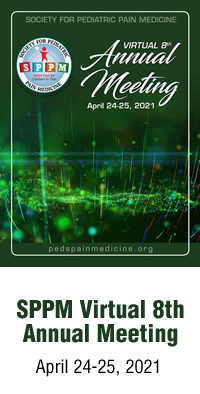ASA Presentations
Superior Analgesia with IV Acetaminophen in Pediatric Patient with Mesenteric Lymphadenitis
By Vasilije Mijovic, MD; Mogana Jayakumar, DO; Sohelia Jafari, MD; Joel Yarmush, MD
New York Presbyterian Brooklyn Methodist Hospital
Weill Cornell Medicine
New York, New York
INTRODUCTION
Para-acetylaminophenol, known as acetaminophen in United States and Paracetamol in Europe, is most commonly administrated as an over-the-counter oral analgesic. Although the analgesic mechanism of acetaminophen is not fully understood (1), there are some studies that suggest that acetaminophen produces its analgesic effect by inhibiting cyclooxygenase (COX) and prostaglandin H2 synthase. (2) IV acetaminophen has a more rapid and predictable onset of effect and time to peak concentration in most patients compared with rectal or oral administration. (3) Mesenteric lymphadenitis (ML) is an inflammatory condition of the mesenteric lymph nodes that can present with acute or chronic abdominal pain. As the nodes are usually in the right lower quadrant, ML sometimes mimics appendicitis or intussusceptions. (4) Recently performed imaging studies among subjects with suspected appendicitis or intussusception confirm that acute ML is the most frequent alternative diagnosis. (5,6) ML is diagnosed by ultrasound that shows abdominal lymph nodes (greater than 8 mm in diameter). (7,8) Acute ML is a self-limited condition. Treatment involves supportive care including pain management and adequate hydration. (9) Abdominal pain occurring in children with ML typically resolves within one to four weeks, however, many children may have symptoms up to 10 weeks.(10)
CASE PRESENTATION
A 5-year-old boy with no PMH presented to the ER with complaints of abdominal pain. The pain started suddenly and woke the patient from sleep. It was diffuse and intermittent in nature, without alleviating/aggravating factors and without radiation. The pain was associated with nausea and the child had an episode of non-bloody, non-bilious vomitus. Primary ultrasonogram was done in the ER and was noted to be unremarkable. Due to the concern of potential appendicitis, the surgical team was consulted. The surgical consultation determined that appendicitis was unlikely and the patient was admitted to the inpatient ward. He started to receive conservative management with symptomatic treatment of abdominal pain and nausea. Pain was treated incrementally using the visual analog pain score: applying warm compresses for scores 1-3; oral Tylenol 10mg/kg for scores 4-6 and oral Tylenol 15 mg /kg for scores 7-10. As the symptoms did not improve, IV Famotidine 0.25mg/kg BID and IV Ketorolac 0.5mg/kg were started and continued for the following 5 days.
Abdominal pain worsened and ultrasonogram was repeated. Repeated ultrasonographic findings showed no evidence of appendicitis or intussusceptions, but were remarkable for right lower mesenteric lymph nodes enlargement. The surgical team re-evaluated the patient and no changes in treatment were recommended. Due to worsening symptoms, the pain management team was consulted for further recommendations. Narcotics were held due to fears that peristaltic depression could mask a worsening condition. IV Tylenol was started and the patient experienced significant improvement after the first dose. The patient was treated with IV Tylenol for 4 days and the symptoms resolved. He was able to tolerate PO intake and no additional episodes of pain were observed.
CONCLUSION
Acetaminophen is an effective analgesic and antipyretic with minimal anti-inflammatory properties. (11) In one series of 70 children with clinically suspected acute appendicitis, 16 percent had a final diagnosis of mesenteric lymphadenitis established by ultrasound, clinical course, or surgery (4). Since acute appendicitis and intussusceptions must be excluded prior to the determination of mesenteric lymphadenitis as the definitive diagnosis, the plan of care should be established with caution. Patients may present in distress, as pain is usually severe and associated with nausea and vomiting. Opioids should be avoided due to depressive effect on peristalsis, as well as possible aggravation of nausea. Rectal administration of analgesics is also contraindicated until surgical causes are definitively excluded. We found that early evaluation by pain management was beneficial for treatment of the acute symptoms. As our patient showed significant improvement with IV acetaminophen, despite resistance to alternative modes of analgesia with persistent symptoms, we recommend IV acetaminophen be considered the analgesic of choice in pediatric populations for unexplained abdominal pain. With a high safety profile and superior results, it would merit consideration before a definitive diagnosis is established.
References
- Smith HS. Potential analgesic mechanisms of acetaminophen. Pain Physician 2009; 12:269.
- Aronoff DM, Oates JA, Boutaud O. New insights into the mechanism of action of acetaminophen: Its clinical pharmacologic characteristics reflect its inhibition of the two prostaglandin H2 synthases. Clin Pharmacol Ther 2006; 79:9.
- Erin N. Maxwell, Brittany Johnson, et al. Intravenous Acetaminophen Induced Hypotension: A Review of the Current Literature, Annals of Pharmacotherapy 2019; doi: 10.1177/1060028019849716
- Vignault F, Filiatrault D, Brandt ML, et al. Acute appendicitis in children: evaluation with US. Radiology 1990; 176:501.
- B. Toorenvliet, A. Vellekoop, R. Bakker et al., “Clinical differentiation between acute appendicitis and acute mesenteric lymphadenitis in children,” European Journal of Pediatric Surgery, vol. 21, no. 2, pp. 120–123, 2011.
- K. J. Lim, K. Lee, D. Y. Yoon et al., “The role of US in finding intussusception and alternative diagnosis: a report of 100 pediatric cases,” Acta Radiologica, vol. 56, no. 2, pp. 228–233, 2014.
- Karmazyn B, Werner EA, Rejaie B, Applegate KE. Mesenteric lymph nodes in children: what is normal? Pediatr Radiol 2005; 35:774.
- Helbling R, Conficconi E, Wyttenbach M, et al. Acute Nonspecific Mesenteric Lymphadenitis: More Than "No Need for Surgery". Biomed Res Int 2017; 2017:9784565.
- Simanovsky N, Hiller N. Importance of sonographic detection of enlarged abdominal lymph nodes in children. J Ultrasound Med 2007; 26:581.
- Benetti C, Conficconi E, Hamitaga F, et al. Course of acute nonspecific mesenteric lymphadenitis: single-center experience. Eur J Pediatr 2018; 177:243.
- Open anesthesia, Acetaminophen toxicity, Brunton L, Chabner B, Knollman B. (eds.) Goodman and Gilman’s The Pharmacological Basis of Therapeutics, 12th ed. New York, NY: McGraw Hill; 2010: Ch. 34




